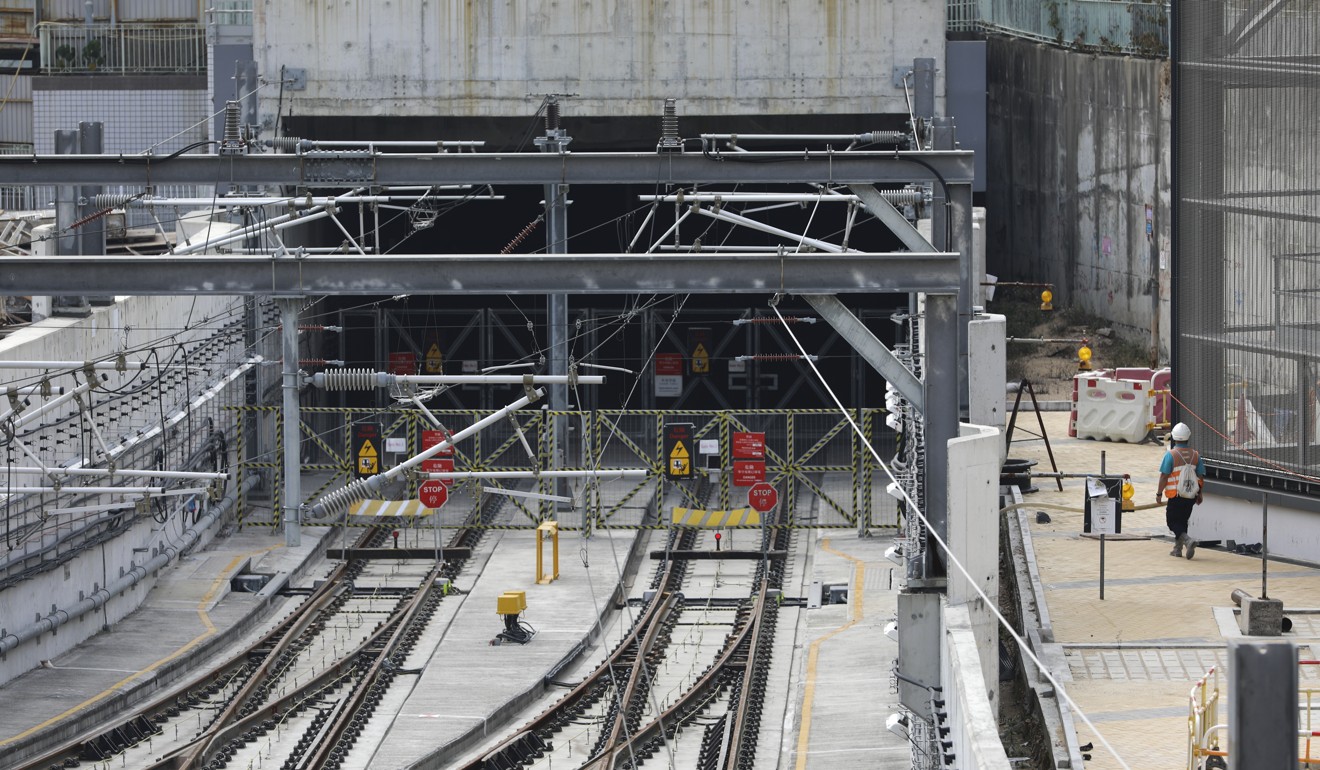
MTR Corporation announces plans to strengthen Hong Kong’s scandal-hit Hung Hom station – but repairs could take 18 months
- City’s railway operator says buildings at Hung Hom station on the Sha Tin-Central rail link safe for construction to continue
- Project’s troubled construction firm – Leighton Contractors – could be tasked with the lengthy repairs

Repairs at the scandal-hit station of Hong Kong’s most expensive rail link are expected to take up to 18 months and the project’s troubled contractor could be tasked with making the fixes.
The MTR Corporation on Thursday said the buildings at Hung Hom station on the Sha Tin-Central rail link were safe for construction to continue – but added that other measures would be required to address deficiencies and meet compliance.
The rail operator also announced a plan to open the Tai Wai-Kai Tak section of the link by the first quarter of next year. The company said trains could be running from Tai Wai to Hung Hom by the end of 2021.
The project’s total cost was expected to reach at least HK$99.1 billion (US$12.6 billion) – up from HK$97.1 billion without the partial opening. The MTR Corp would pay for the extra HK$2 billion but would also work with the government for an overall settlement for any other costs arising from problems at Hung Hom station.

Roger Bayliss, the MTR Corp’s projects director, insisted that the Hung Hom structures were safe for continuing construction, but admitted they failed to meet compliance.
“We need to take comfort from the fact that the station has been there for between two and four years, and there are no signs of distress at all,” Bayliss said.
He pointed out that a structural assessment had been carried out by independent consultants.
The rail project has been plagued by allegations of shoddy work at the station since May 2018. The accusations were followed by a scandal involving missing documents.
The Tai Wai to Hung Hom section was expected to open in mid-2019, after an original target of December 2018 was pushed back by construction delays.
On Thursday, transport minister Frank Chan Fan said up to one-third of the couplers might not have been installed properly, while there were some gaps found between the platform slab and diaphragm wall.
To rectify the flaws, Bayliss suggested installing steel supporting structures and steel columns, thickening slabs and adding bolts anchored to steel plates at part of the station.
But he could not give an exact number of how many spots would need to be fixed because final details had not yet been developed.
“It’s not about the number, it’s about the quantum,” he said.

The MTR Corp expected it would take four to six months to get detailed design government approval for the plans.
It predicted the repair work would need another nine to 12 months to be wrapped up on site.
The repairs could be carried out by Leighton Contractors (Asia), the main contractor on the project. Leighton was accused of cutting reinforcement bars short and not fitting them properly into couplers. The contractor was also accused of changing supporting diaphragm walls without authorisation.
“Leighton are the contractor for the station and as such they have ongoing contractual responsibilities. So, it’s only right and proper that the first people we speak to about these suitable measures are Leighton,” Bayliss said.
“But I think you should rest assured that whoever does those suitable measures, we will ensure there will be very close supervision on the site.”
Ngai Hok-yan, a registered structural and geotechnical engineer, said his biggest concern was about the safety of the platforms even after the planned strengthening work.
“Even the MTR management may not be able to tell where exactly all the problematic couplers are, therefore, it warrants an even higher safety level for the improved work,” he said. “Hong Kong will rely on the Buildings Department and Highways Department to be gatekeepers for the remedial work.”
Ngai disagreed with the management's view that the platforms did not show any distress over the past few years.
“Who knows what the scenario will be when they are loaded with passengers and trains?” he said.
Democratic Party lawmaker Helena Wong Pik-wan said she found it hard to understand why the government accepted claims that structures at Hung Hom station were safe because the independent inquiry commission had not submitted its final report.
The Democratic Alliance for the Betterment and Progress of Hong Kong urged the MTR Corp to adopt the strictest standards before it accepted the repairs at Hung Hom station.
Additional Reporting by Denise Tsang